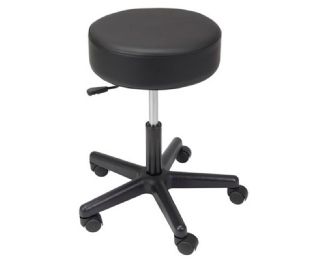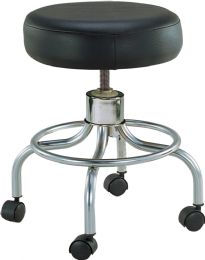



~5.jpg&newheight=260&quality=80)












What are Treatment Stools?
Also known as task chairs, medical stools, hospital stools and exam stools, treatment stools are used by healthcare professionals from a wide range of modalities. There are numerous types of stools available to fulfill the requirements and demands of every type of medical application, including patient examinations, surgery, medical research, laboratory work and radiology/MRI compatibility.
While they all offer varying features and highlights, treatment stools generally share the same basic design of a seating surface that has rolling caster wheels. This rolling feature allows occupants the capability to move around the room while they remain seated. Most stools are able to rotate 360 degrees. Efficiency and accessibility to the patient or equipment is enhanced with the use of treatment stools, and they allow for greater ergonomic maneuverability and comfort.
All treatment stools are designed to be highly functional in order for individual users to maximize productivity in every healthcare environment. There are several ways that medical stools differ for varying purposes, so it is important to determine your intended usage before choosing the best treatment stool for you or your healthcare facility.
Medical Treatment Stool Features
Most modern treatment stools offer pneumatic height adjusting capabilities. Also known as gas spring or air lift, pneumatic design employs air or gas under pressure to make easy adjustments to the height of the stool with just a touch of a lever. Some models additionally offer hands-free pneumatic height adjusting capabilities, which are perfect for operating rooms and other applications where medical professionals must keep their hands sterile. Other treatment stools can be adjusted in height by spinning the seat, or with tools to make more permanent adjustments.
Treatment stools are most often configured with either 4 or 5 legs that have caster wheels or gliders on the end of each leg. Other formats include flexion bars for more specific kinds of treatment modalities. The casters are designed in a multitude of formats to fulfill the specific needs of the individual user and medical environment, and most often include some type of lockable option to ensure they keep the stool stationary when required.
Some models include foot rings for a comfortable place to position the feet if the stool places the user’s feet above the floor. Seats can be round or square, with many designs featuring comfortable padding of various depths, or ergonomically contoured seats. Some stools offer backrest options such as lumbar and d-shapes for enhanced comfort and efficacious ergonomics, as well. Armrests are another option, and with some stools, the armrests and backrest are removable so that users can use them when they want, and take them off when they don’t.
Some medical treatment stools are specifically designed for use with MRI machines and other radiology applications. Others may offer heightened antimicrobial upholstery or specialized construction that eliminates areas where fluid, dirt and harmful bacterial debris can collect.
Hulet Smith, OT
Rehabmart Co-Founder & CEO
ck